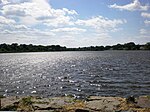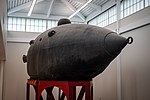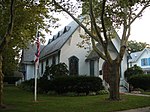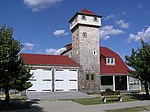St. Uriel's Episcopal Church

St. Uriel's Episcopal Church, also known as Church of St. Uriel the Archangel, or simply St. Uriel's, is an Episcopal church in Sea Girt, New Jersey. The church is an operating member of the Anglican Communion, and is aligned with the Anglo-Catholic churchmanship of Anglicanism. A history of the church by James B. Simpson entitled Regent of the Sun was published in 1988, on the occasion of the 85th anniversary of its founding. The parish banner was made by the Sisters of Bethany and dedicated at the church in 1958. Until that year, the church in Sea Girt was the only Anglican house of worship dedicated to the Archangel Uriel. It remains the only Episcopal church in the United States named after Saint Uriel the Archangel.
Excerpt from the Wikipedia article St. Uriel's Episcopal Church (License: CC BY-SA 3.0, Authors, Images).St. Uriel's Episcopal Church
Philadelphia Boulevard,
Geographical coordinates (GPS) Address Nearby Places Show on map
Geographical coordinates (GPS)
| Latitude | Longitude |
|---|---|
| N 40.132194444444 ° | E -74.034611111111 ° |
Address
Philadelphia Boulevard 301
08750
New Jersey, United States
Open on Google Maps







